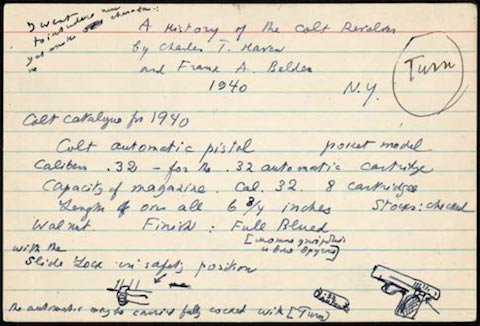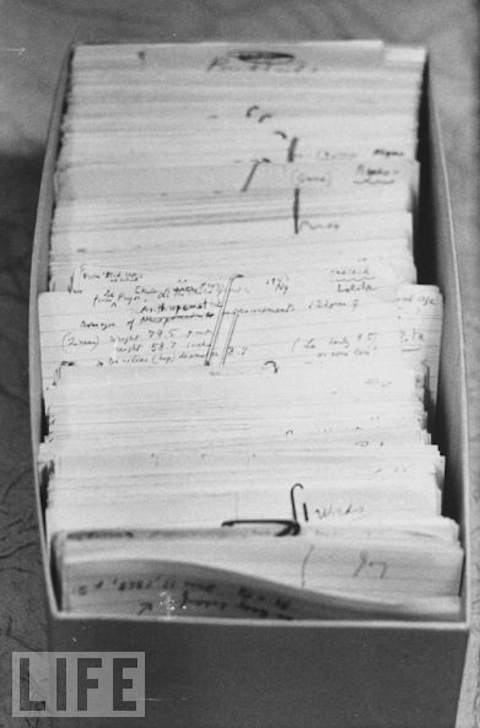https://mleddy.blogspot.com/2009/11/nabokovs-unfinished.html
Nice short review with some cultural touchstones which may have been alluded to in the text, but whose context may be missing in years to come.
https://mleddy.blogspot.com/2009/11/nabokovs-unfinished.html
Nice short review with some cultural touchstones which may have been alluded to in the text, but whose context may be missing in years to come.
When Vladimir Nabokov died in 1977, he left instructions for his heirs to burn the 138 handwritten index cards that made up the rough draft of his final and unfinished novel, The Original of Laura. But Nabokov’s wife, Vera, could not bear to destroy her husband’s last work, and when she died, the fate of the manuscript fell to her son. Dmitri Nabokov, now seventy-five—the Russian novelist’s only surviving heir, and translator of many of his books—has wrestled for three decades with the decision of whether to honor his father’s wish or preserve for posterity the last piece of writing of one of the greatest writers of the twentieth century.
Nabokov's wishes were that his heirs burn the index cards on which he had handwritten the beginning of his unfinished novel The Original of Laura. His wife Vera, not able to destroy her husband's work, couldn't do it, so the decision fell to their son Dimitri. Having translated many of his father's works previously, Dimitri Nabokov ultimately allowed Penguin the right to publish the unfinished novel.
Reviewing The Original of Laura, Alexander Theroux describes the cards as a “portable strategy that allowed [Nabokov] to compose in the car while his wife drove the devoted lepidopterist on butterfly expeditions.”
While note cards have a certain portability about them for writing almost anywhere, aren't notebooks just as easily portable? In fact, with a notebook, one doesn't need to worry about spilling and unordering the entire enterprise.
There are, however, other benefits. By using small atomic pieces on note cards, one can be far more focused on the idea and words immediately at hand. It's also far easier in a creative and editorial process to move pieces around experimentally.
Similarly, when facing Hemmingway's White Bull, the size and space of an index card is fall smaller. This may have the effect that Twitter's short status updates have for writers who aren't faced with the seemingly insurmountable burden of writing a long blog post or essay in other software. They can write 280 characters and stop. Of if they feel motivated, they can continue on by adding to the prior parts of a growing thread. Sadly, Twitter doesn't allow either editing or rearrangements, so the endeavor and analogy are lost beyond here.
Having died in 1977, Nabokov never completed the book, and so all Penguin had to publish decades later came to, as the subtitle indicates, A Novel in Fragments. These “fragments” he wrote on 138 cards, and the book as published includes full-color reproductions that you can actually tear out and organize — and re-organize — for yourself, “complete with smudges, cross-outs, words scrawled out in Russian and French (he was trilingual) and annotated notes to himself about titles of chapters and key points he wants to make about his characters.”
Vladimir Nabokov died in 1977 leaving an unfinished manuscript in note card form for the novel The Original of Laura. Penguin later published the incomplete novel with in 2012 with the subtitle A Novel in Fragments. Unlike most manuscripts written or typewritten on larger paper, this one came in the form of 138 index cards. Penguin's published version recreated these cards in full-color reproductions including the smudges, scribbles, scrawlings, strikeouts, and annotations in English, French, and Russian. Perforated, one could tear the cards out of the book and reorganize in any way they saw fit or even potentially add their own cards to finish the novel that Nabokov couldn't.
Link to the idea behind Cain’s Jawbone by Edward Powys Mathers which had a different conceit, but a similar publishing form.
https://www.openculture.com/2014/02/the-notecards-on-which-vladimir-nabokov-wrote-lolita.html
Some basic information about Vladimir Nabokov's card file which he was using to write The Origin of Laura and a tangent on cards relating to Lolita.

